György Matolcsy
The focus of the global economy is heading towards the east



Beyond the bubble – Levente Horváth
GEURASIA
2–3.
Eurasia does not mean conquest: Interview with geopolitical expert Parag Khanna – Levente Sitkei
THE ECONOMICS OF GEOGRAPHY
6–8.
The focus of the global economy is heading towards the east: Interview with György Matolcsy, Governor of Magyar Nemzeti Bank (MNB), the central bank of Hungary
– Tamás Nánási-Kézdy
2T2C: TALENT, TECHNOLOGY, CAPITAL, COGNITION
10–11.
A sensational miracle in the desert – Zolta Sitkei
12–13. Five reasons why the 21st century is the century of Eurasia
RHYMES IN HISTORY
14–15.
Cycles and patterns
– The new Renaissance – Norbert Csizmadia
16–17. Kazakhstan and the Zhus – Szabolcs Veres
NEW SUSTAINABLE ECONOMICS
19–21.
On the road of success: Eurasia Forum 2022 - Marcell Horváth
– Dávid Szabó – Eszter Boros
– Nóra Anna Sándor
23–25.
Asian e-cars are overtaking while accelerating
– Sándor Pető
„A new supercontinent is emerging: Eurasia, the combination of Europe and Asia, stretching from Lisbon to Shanghai or Jakarta.”
Bruno Macaes
CULTURE AND INNOVATION
26–28.
Lunar New Year and Spring Festival in China
– Alexandra Zoltai
29. The FIFA World Cup in Qatar - in pictures
ANCIENT KNOWLEDGE IN A MODERN WORLD 30–32.
Ancient Knowledge in a Modern World – Attila Grandpierre
We have been witnessing the emergence of the new world order, the Eurasia era. However, we are looking at the emergence of the new world order from the Western information bubble. We examine and research the foreign policy aspirations of distant countries with a Western mindset, using Western terminology, through Western eyes - and often misinterpret them as a result.
Before the outbreak of the Russian-Ukrainian war, even renowned experts believed that Russia would not attack Ukraine, the Russians were only threatening, they said. But then war broke out and everyone was shocked.
Russia is a country close to Europe, but its intentions have been misinterpreted. More distant countries, such as China, India or the South-East Asian countries, have even more different cultures, ways of thinking and historical backgrounds. It should not be overlooked that they are also analysed with a western mindset.
Today, we are witnessing a series of geopolitical conflicts similar to the Russian-Ukrainian war, with various proxy wars taking place across the world.
Researchers have already written about the so-called Thucydides trap, whereby a war for supremacy between an emerging country and an incumbent country is inevitable. In the study of modern history, sixteen series of events have been identified in which the rise of a new power posed a strategic dilemma for the previously dominant major power. In twelve of the sixteen cases, war broke out between the “position-holder” and the “emerging” power.
Levente Horváth, Ph.D., Director of the Eurasia Center, Editor-in-Chief of the Eurasia CenterThe US is losing its hegemonic power as the “position-holder” country. Asian countries, as emerging economies, are going their own way and are undergoing economic emergence and significant technological development. While the US insists on the current unipolar world order, China and Russia have indicated their support for a multipolar world order on several platforms. Consequently, there is a high chance that, in the information bubble in the West the foreign policy moves of the Eastern countries are deliberately misinterpreted and demonised through the use of double standards.
One of the aims of Eurasia magazine is to step out of this Western information bubble and present the concept of Eurasia, the thinking, economic development, current domestic and foreign policy changes and culture of the countries of the region.

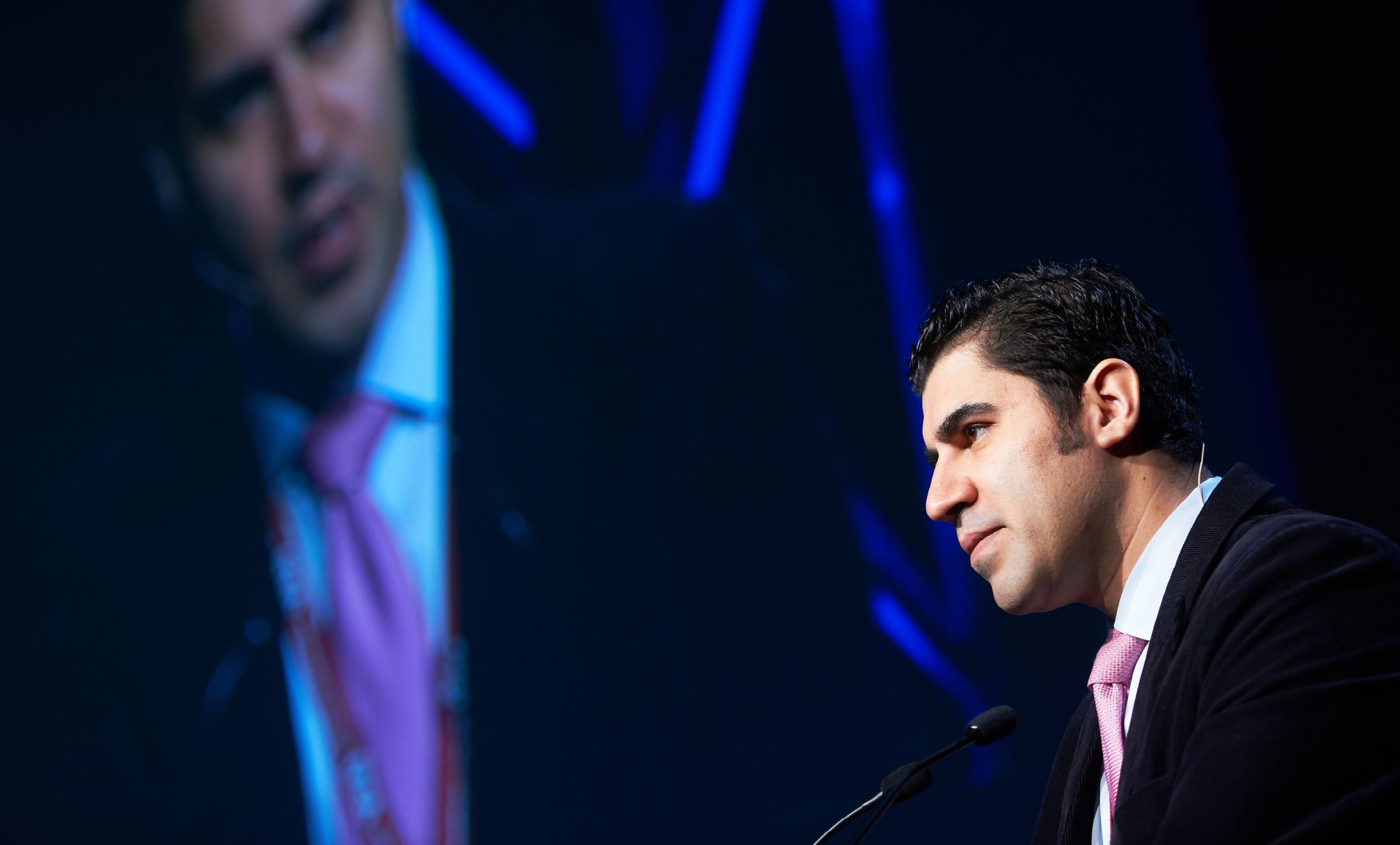 By Levente Sitkei
Photo: paragkhanna.com
By Levente Sitkei
Photo: paragkhanna.com
CHINA IS NOT ONE OF THE CONQUERING EMPIRES, SAID PARAG KHANNA IN AN EXCLUSIVE INTERVIEW WITH EURASIA JOURNAL. THE DISTINGUISHED INDIANBORN, GEOPOLITICAL ANALYST POINTED OUT THAT INCREASING TRADE INFLUENCE WILL NOT INEVITABLY BRING CULTURAL INFLUENCE, SO GINSENG TEA WILL NOT REPLACE COCA-COLA.
- Do you consider Eurasia as one entity, one continent, one region?
- Eurasia is a mega-continent that does not consist of one region. Even a continent like Australia is divided into many regions, so obviously Eurasia is home to many regions, and no continent has more regions than Eurasia. Scandinavia is a region, like Iberia or Anatolia. But so is Southeast Asia, or the Indian subcontinent. Every continent is made up of regions. In certain situations, these regions find
ment. This is how the British Empire became a world power. The question is not whether it will make China successful, but whether this success can be sustained.
- Do you think China is satisfied with the influence it has achieved? Is it possible that Beijing is trying to establish cultural dominance in the same way as the United States?
- China is a trading country, not a conquering empire. A conquering country would aim to control the life of the conquered country. China is not like that at all. Rather, it aims to use its influence to import goods from countries far away.
themselves in increasingly tense situations with their neighbors, such as the relationship between China and Southeast Asia. The two regions have very close economic ties. Southeast Asia is China’s second largest trading partner. China’s trade expansion is clearly growing across Eurasia.
- After all, these regions and countries are still trying to protect their national viewpoints. Can countries in this vast community unite their interests?
- In what respect?
- Let’s start with the political goals. China’s intention to win is not only in terms of trade, but also in terms of gaining power.
- This is obvious. Trade and investment is the way to achieve power. It is a very old rule, nothing other than mercantilism. China is doing that indeed, but it is not the only state to use this instru-

- Does not China endeavor to (allow me use a symbol) make everyone drink ginseng tea in its zone of influence? The United States has made its own area of interest drink Coca-Cola.
- No, cultural hegemony is not possible as the world will not learn to speak Chinese. Like the language, Chinese social, cultural and political traditions will not spread to the outside world. Therefore, it is also evident that if an occasional authoritarian turn takes place in a country, it will not be the result of China’s influence, but of other factors. China does not export its ideology.
"China is a trading country, not a conquering empire. A conquering country would aim to control the life of the conquered country. China is not like that at all. Rather, it aims to use its influence to import goods from countries far away."Kishore Mahbubani – Jeffery Sng:

Publisher: National University of Singapore Press
Publication date: 2017
ISBN: 978-9814722490
Pages: 286
The subject of the book is the unique institutional phenomenon of ASEAN, the modern-day adaptability of which can serve as a model for various other international and regional organisations. In addition to an economic or social organisation, its founders envisioned the formation of a culturally integrated society. ASEAN, the Association of Southeast Asian Nations, is a fascinating institution in more ways than one. It is a ‘miracle’ of a diverse region that decades ago was referred to as the ‘Balkans’ of Asia. However, it is currently among Asia’s most prosperous organisations. ASEAN is also remarkable in terms of social, cultural, and economic integration. Kishore Mahbubani and Jeffrey Sng's long-awaited, lucid and logically organised work explores the position of an Asian organisation in the modern world. Szabolcs Veres – The author is a researcher at the Eurasia Center of John von Neumann University
Bruno Maçães:

Publisher: Allen Lane
Year of publication: 2018
ISBN: 978-0241309254
Number of pages: 304
Bruno Maçães argues that the best way to describe the current transformation in the

Publisher: World Scientific
Publication date: 2017
ISBN: 978-981-3227-58-3
Pages: 144
South Korean professor of economics with a doctorate from Harvard University, Jong-Wha Lee, is the head of the Asian Research Institute at Korea University. This book is a compilation of 25 of the author's articles published on the US website, Project Syndicate, between 2012 and 2017. These articles are grouped into the following main topics, which form the chapters of the book: growth, cooperation, finances and education. The forum, which publishes original, if occasionally provocative, ideas from prominent decision-makers, invited Jong-Wha Lee to publish, paving the way for the online journal to post the views of a growing number of active Asian decision-makers and thinkers, thereby stimulating the global exchange of ideas.
Alexandra Zoltai – The author is a researcher at the Eurasia Center of John von Neumann University
the world order is with the word “Eurasian”. He believes that while China and Russia recognised the strategic role of Eurasia quickly, Europe was a little late. However, European countries will soon realize that their political ambitions are closely linked to the Eurasian supercontinent and the other countries that make it up. In the writer’s view, the Eurasian era has already begun, based on the following facts: China’s major infrastructure project, the Belt and Road, with which they plan to reopen the former Silk Road, the global successes of cities based on the example of Hong Kong and Singapore, Turkey’s increasing international role and America’s changing place in the world.
International scientific and professional bestsellers in Hungarian and books with powerful thoughts from Hungary
A selection of our volumes:
GYÖRGY MATOLCSY On the Edge of Times

The Rerun of the 1940s and the 1970s
SANDOR P VACI
An English Dimension

The diaries of the Hungarian Count István Széchenyi, 1832-1834
ENDRE DOMONKOS
An Economic History of Hungary from 1867

NORBERT CSIZMADIA Geofusion 2.0

The Power of Geography in the Economic and Geopolitical World Order
PallasAtheneKiado
Pallas Athéné Könyvkiadó
pallasathenekiado
pabookstore
SOONER OR LATER THE WEST WILL HAVE TO REALIZE THAT CHINA’S CONTINUOUS RISE CAN NO LONGER BE HALTED, SAID THE GOVERNOR OF MAGYAR NEMZETI BANK (MNB), THE CENTRAL BANK OF HUNGARY IN AN INTERVIEW WITH OUR JOURNAL.
- Mr. Governor, you have often expressed your ideas about the changing world order and the rise of Eurasia over the past decade. How do you now see this geopolitical transformation in light of the serious consequences of the pandemic?
- The shift of the world’s center of gravity in terms of power and economy has been a long-term and non-linear process that is not happening all at the same time in areas such as technology, financial systems, spheres of influence and military capabilities. For example, the global financial dominance of the United States seems to be permanent, although China is showing quick progress in re-
valuing segments such as artificial intelligence, digitization of production and services — in other words hybrid systems — and in the field of renewable energies. The rise of Eurasia remains a determining process of our century.
- What role can Hungary play in the cooperation with Eurasia?
- It has now become clear that the last few decades of success in Central and Eastern Europe bear a close resemblance to the development patterns of the Asian tigers and then China’s large cities. Similarly to the Asian model, our region also relies on

a highly skilled workforce and the excellence of its processing industry. Also, a regional cluster has been established in Central Europe, which is currently linked to the world economy predominantly via Germany’s export mechanism. At the same time, our capabilities make us suitable for connecting directly to the eastern nodes as well.

- What common interests do the European Union and China have in today’s complex, fraught environment?
- The European Union is in a special position as it is seeking its place within the Atlantic Alliance, not only in relation to China, but in relation to the United States as well. As far as China is concerned, sooner or later the western world will have to realize that its relentless onward growth
more complex since then, but this is why we should be thinking more in terms of networking.
- How can we ensure that Eurasia, as a new pole, truly emerges from these processes as the winner of the century?
- The key to success lies in changing the way of thinking. Economic sciences still need renewal built on intellectual resources, sustainability and the principle of life (the principle of maximum impact). But it is not just economics that needs a shift
and progress can no longer be halted. Instead, efforts should rather focus on drawing from historical patterns. Eurasia has always been one of the world’s dominant continental regions and it has already experienced various phases of the migration of the global economic center of gravity. This center of gravity is now shifting to the east again, as it used to be for centuries before the 1500s. Europe should recall the successful cooperation patterns of that time, embodied in the flow of goods, knowledge, culture and technology along the old Silk Road. Obviously the world has become much
in attitudes. In general, we have to move to a different way of thinking, rather than clinging to the one that has led to the world’s current socio-economic problems. This truth is well-expressed in the ancient Chinese wisdom from Confucius: “Learning without reflection is a waste of time; reflection without learning is dangerous”.
"The key to success lies in changing the way of thinking. Economic sciences still need renewal built on intellectual resources, sustainability and the principle of life."
Our International Economy and Business program is among Hungary’s most popular MSc programs
Establishing the MNB Knowledge Center and renewing the International Economy and Business Master's program at John von Neumann University were the two most important pillars of the cooperation between the Magyar Nemzeti Bank and the University. After a comprehensive renewing of the MSc program by the MNB Institute, this program provides a unique and competitive knowledge for the students in Hungary.
MNB Institute, this program provides a unique and competitive knowledge for
















Our renewed MSc program even in its first year attracted more than 3 times as many applicants as the planned quota.
The MNB Institute welcomes its students from September with internationally well-known professors, innovative and professionally outstanding courses, the professional support of the Magyar Nemzeti Bank and unique talent management programs.



mnbintezet.hu/oktatas















YOU COULDN’T DREAM DUBAI UP. BUT AS YOU ARE LOOKING ACROSS THE SAND DUNES OF THE HOT DESERT, YOU CATCH SIGHT OF A GIGANTIC CITY. YOU SEE A CITY TEEMING WITH LIFE, WITH DOZENS OF PLANES IN THE SKY, SHIPS GOING TO-ANDFRO IN THE CITY HARBOR, AND PALACES OF GLASS STRETCHING TO THE SKY ACROSS THE DESOLATE WASTELAND. DUBAI IS A PATCHWORK QUILT IN THE DESERT WITH MILLIONS OF LIGHTS AND VAST GREEN SPACES. AND WE HAVE TO ASK OURSELVES HOW IS THIS POSSIBLE? CAN YOU BUILD A DREAM WORLD FROM THE ENORMOUS WEALTH OF OIL SHEIKHS IN A PLACE ALMOST UNINHABITABLE FOR EUROPEANS? THE EMIRATE BUILT A BEAUTIFUL THEATER IN THE MIDDLE OF NOWHERE AND THE ACTORS PLAYED THEIR PARTS SO WELL THAT THE PLAY FINALLY BECAME REAL.
Dubai International Airport (DXB) is one of the busiest airports in the world. However, Dubai cannot offer the world as much as its prestigious ranking would justify. It is not located at the intersection of trade routes and there is no historical tradition of travelers turning up there. Yet, through clever politics and tactics, it has obtained a central role within a strikingly short period of time. It is particularly interesting that the emirate’s oil reserves are not inexhaustible. Consequently Dubai’s wealth and splendor cannot be attributed solely to oil. Indeed, if the city relied only on oil exports, not many people would know its name today. This is where the talents of the current monarch, Sheikh Rasheed al-Maktoum, Emir of Dubai come into play. The city and the emirate have been ruled by the Al-Maktoum dynasty since 1833.
If the city’s natural resources are not enough to provide enough wealth, they would have to find another solution. This could be one of the central ideas behind Dubai’s rise.

Huge skyscrapers, hair raising locations and extreme activities probably come to most people’s minds when they think of Dubai. The city-state has become associated with luxury and an affluent lifestyle because Dubai devotes a lot of resources to marketing. Promoting Dubai,a priority for tourism, has been spectacularly successful. This process culminated in the Dubai 2020 World Expo, which opened to the public in October 2021 due to the pandemic.
The Dubai World Expo was of historical importance for more reasons than boosting tourism as this was the first world expo held in the Middle East. The 438-hectare site did justice to the illustrious event. It was only desert eight years before, but was transformed into a small city fit for a sci-fi movie thanks to several billion dollars of investment and eight years of work.
"The basis for material wealth is an intellectual resource: knowledge. When transferred, knowledge becomes information, or data when it is unified. Data represent the new oil, talent is the new capital and creativity is the new land."
Source: BC4LS Global Debates - 95 theses for long-term sustainability
LONG-TERM SUSTAINABLE GROWTH HAS BECOME A PRIORITY ALSO FOR ASIAN COUNTRIES.
Major Asian economies have not only set the target dates for carbon neutrality, but have also launched government programmes on an unprecedented scale to build a green and circular economy. Just think of Korea’s New Deal, Singapore’s Green Plan or China’s 14th Five Year Plan.
ASIAN COUNTRIES ARE NOW WORLD LEADERS IN TECHNOLOGICAL DEVELOPMENT AND DIGITALISATION.
Asian tech powers now have an exponentially growing innovation capacity of their own. Five of the top 15 in last year’s World Intellectual Property Organization (WIPO) innovation ranking are from Asia. South Korea came 5th, Singapore 8th, Mainland China 12th, Japan 13th and Hong Kong 14th. The world’s press is abuzz with the scientific achievements of Chinese space missions, supercomputers, the artificial sun and moon, or even Singaporean scientists.
THE CENTRAL BANK DIGITAL CURRENCY COULD BECOME THE BASIS FOR THE OPERATION OF EURASIAN NETWORKS.
Eurasian countries from Sweden to China, from the United Arab Emirates to Thailand are taking the biggest share of the central bank digital currency (CBDC) revolution.

THE IMPORTANCE OF REGIONAL COOPERATION FORMATIONS IS GRADUALLY INCREASING IN THE REGION.
Eurasia has become a key arena for multilateral organisations and cooperation, laying the foundations for the multipolar world order of today and tomorrow.
A key force shaping the Eurasian bloc is the Belt and Road initiative, which now consists not only of roads and railways, but increasingly of digital networks and green economy, technology and education cooperation.
ASIAN HIGHER EDUCATION INSTITUTIONS ARE CATCHING UP WITH THE WORLD’S BEST.

Without the cooperation of Eastern and Western universities and talent, it is now almost inconceivable to create scientific excellence, or even a model for long-term sustainable growth.
The quality of higher education in Asia has improved dramatically over the past decade: while in 2010, 15 Asian institutions were ranked in the top 100 of the world’s leading university rankings (QS World University Rankings), by 2022 this number almost have doubled (26).
Photo: iStockA GROWING NUMBER OF AUTHORS IN GEOPOLITICAL AND ACADEMIC LITERATURE ARGUE THAT OUR CURRENT ERA AND AGE RESEMBLES AN EARLIER PATTERN IN HISTORY.
David Gosset, Parag Khanna and Ian Goldin write about a ‘new Renaissance’; Valerie Hansen says that our current era is most similar to the era of the 1000s in terms of both economy and climate; Jared Diamond and Robert D. Kaplan state that we are reverting to the world of Marco Polo, while Bruno Macaes or Peter Frankopan write about a new interconnected Eurasian era. Mark Twain wrote that history never repeats itself, but it does often rhyme.
The intersection of these theories tells us that 500-year (and 250-year) cycles are repeated in history. But what happens if we add geography to history and look not only at temporal repetitions but also at spatial changes?
In his book On the Edge of Times, published in September 2022 and presented at John von Neu-
mann University, György Matolcsy repeatedly discusses the importance of cycles and fractals. Fractals are ‘self-similar’ shapes, the smallest part of which has the same pattern as the whole. Just as nature is full of fractal patterns, our geographic environment also holds numerous fractals, but fractals operate not only in space but also in time. History, including economic development, has a fractal structure.
Economic cycles, and even decadal and centennial rhythms, show patterns where the course of a smaller unit is the same or very similar to the course of a larger phase. Therefore, as György Matolcsy says in his book, “without historical cycles and without deciphering fractals, there is no success”. Indeed, systems that produce cycles along dominant patterns are fractal in nature.
On 31 October 2021, the Budapest Centre for Long-term Sustainability (BC4LS) published a global discussion paper entitled “95 points for longterm sustainability and a comprehensive life-centred world order”. In our day and age, we are once again witnessing a radical change of world view. A whole range of new scientific disciplines are converging towards a life-centred world view. A comprehensive, life-centred, community-focused and nature-centred shift in approach is needed, the conditions for which are now in place and are already available.
It is time for a new renaissance, a great rebirth. Life has taken centre stage, the beginning of a new renaissance, a new world order, one based on long-
term, life-centred sustainability. In order to keep the world on an ecologically, socially and financially sustainable path under these circumstances, we need a fundamentally new way of thinking. Transforming our thinking about a sustainable future, putting economic growth on a new footing, is the way to create a new sustainable Eurasian way of thinking, involving the world's leading researchers.
The author is a geographer and Chairman of the Board of Trustees of the Pallas Athene Domus Meriti Foundation and the John von Neumann University Foundation.

"Transforming our thinking about a sustainable future, putting economic growth on a new footing, is the way to create a new sustainable Eurasian way of thinking, involving the world's leading researchers."
 By Szabolcs Veres
By Szabolcs Veres
Photos: iStock
MODERN CENTRAL ASIAN COUNTRIES, INCLUDING KAZAKHSTAN, ARE OFTEN IDENTIFIED WITH THE SO-CALLED "CLAN" OR OTHERWISE KNOWN AS THE "ZHUZ" SYSTEM. THIS CONCEPT WAS LAST HEARD DURING THE BLOODY EVENTS OF JANUARY 2022 DURING THE FIGHT FOR POWER IN KAZAKHSTAN.
If we want to explain it simply, Zhuz (or Jüz) confederation means the historically formed alliance of Kazakh clans. The term is also translated as horde. According to some interpretations, the zhus are one of the three main territorial and tribal divisions in the territory of Cummania, which is lo-
cated in the greater part of present-day Kazakhstan. It represents the main tribal division within the Kazakh ethnic group.
Over the centuries, three tribal confederations were formed on the territory of modern Kazakhstan. These were: the Senior, Middle and Young
zhuz. Each "alliance" occupied vast territories and consisted of clans.
The zhuz was a specific form of socio-political organisation of the Kazakh people. It had the following characteristics: internal regional unity; ethnic unity, cultural and economic community, joint political leadership.
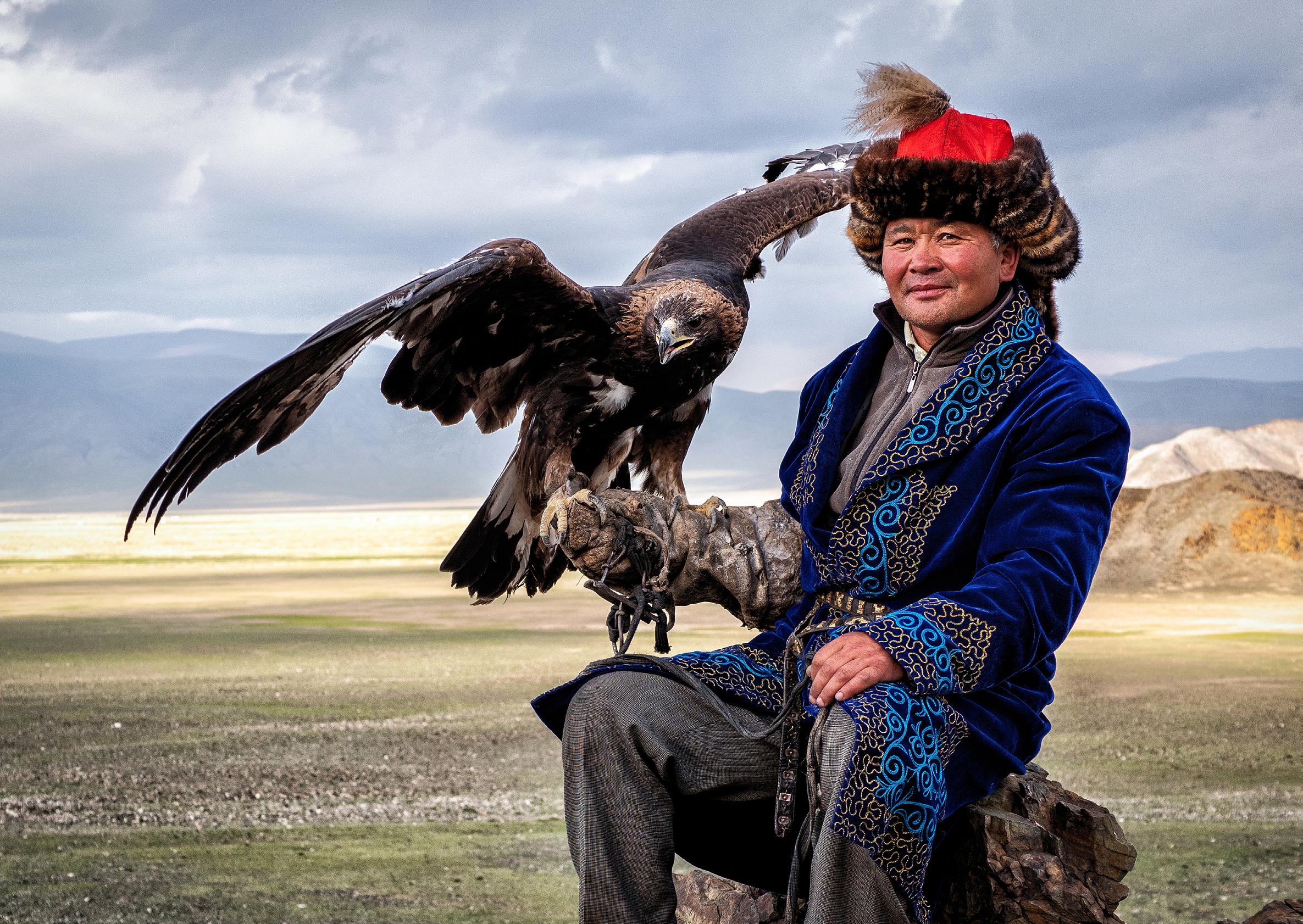
Today, however that has changed. In Kazakhstan, groups within the elite are formed not on the basis of the zhuz or tribal principle, but on the principle of loyalty.
Although it is also true that the current president of Kazakhstan, Kassym-Zomart Tokayev, comes from the clan of Senior zhuz Zhalajir. Ka-
zakhstan’s first president, Nursultan Nazarbayev, is also a Senior zhuz, but from the Shapyrashty clan. Previously, the opinion was expressed in the foreign expert community that the Zhalaiyr clan is considered a "poor relative" in the system of Kazakh clans. Allegedly, this explains the January 2022 events that took place in Kazakhstan. Today, it turned out that this is not entirely true. In Kazakhstan, the social status of the zhuz is still alive today in the common language, but it is built on loyalty instead of historical traditions.
The author is a researcher at the Eurasia Center of John von Neumann University.

 By Marcell Horváth – Dávid Szabó – Eszter Boros
Sándor
By Marcell Horváth – Dávid Szabó – Eszter Boros
Sándor
THE MAGYAR NEMZETI BANK (MNB), HUNGARY'S CENTRAL BANK LAUNCHED A SERIES OF EVENTS IN 2019 CALLED THE BUDAPEST EURASIA FORUM, BASED ON THE IDEA OF THE EMERGENCE OF A MULTIPOLAR WORLD ORDER, INCLUDING THE RISE OF EURASIAN POWER CENTRES.

The Eurasia Forum, held on 19-20 September 2022, was entitled "Sustainable Growth and Cooperation - How to Win in the 21st Century?" and its central message was that enhancing multilateral cooperation is the answer to both short and long-term challenges.
The Forum opened with a keynote speech by György Matolcsy, Governor of the MNB. He pointed out that today we are all looking for the secret recipe for sustainable growth and competitiveness, and that the secret lies in the process of getting results, which in this case is cooperation. This is why, in his opinion, it is important to have an international dialogue and forums such as this series of conferences. The Governor said it was important to learn from the lessons of past economic events and
to develop new patterns and rules to stay on the path to sustainable growth.
János Csák, Minister for Culture and Innovation, said that sustainable growth and the response to demographic challenges require more strong and innovative companies to ensure the growth of the domestic economy.
Speakers at the opening ceremony included Sethaput Suthiwartnarueput, Governor of the Central Bank of Thailand, Jun Zhu, Chairwoman of the Silk Road Fund Co. and Simon Tay, President of the Singapore Institute of International Affairs.
The Forum brought together 48 speakers from 18 countries, most of whom had visited Budapest in person. Among the panellists were Eng Chye Tan, President of the world-renowned National Univer-
György Matolcsy, Governor of Magyar Nemzeti Bank (MNB), Hungary's central bankThe 2022 Budapest Eurasia Forum can be viewed on the conference's official website (mnb.hu/eurasia) and on YouTube. The event will be organised again in 2023 by MNB.

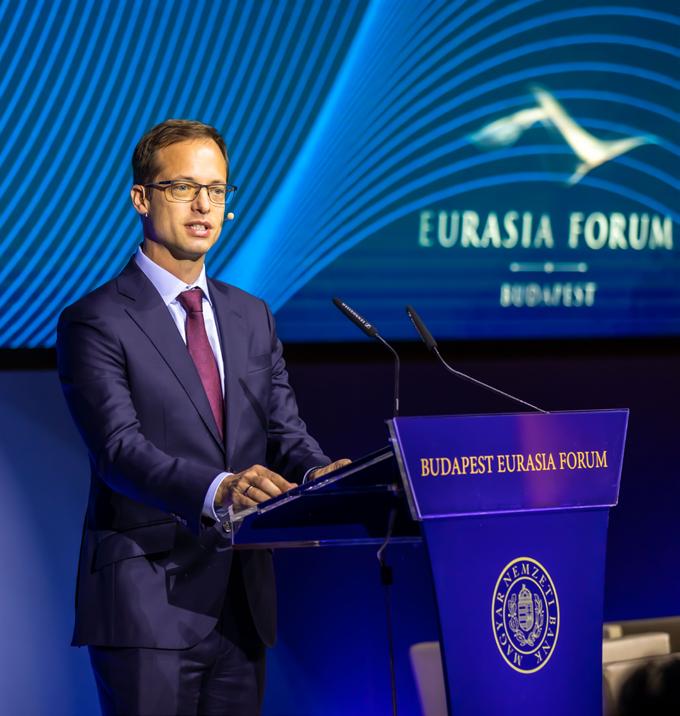
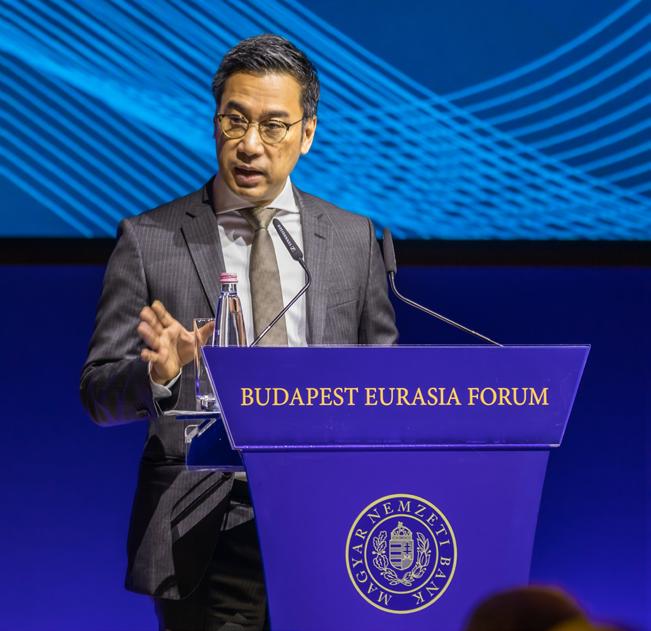

sity of Singapore, Ali Hassan, Senior Representative for Europe and North America at the Dubai International Financial Centre (DIFC), Yang Su Park, Director of Economic Research Institute of the Central Bank of Korea, Norbert Csizmadia, President of the Board of Trustees of the Pallas Athéné Domus Meriti Foundation, Deborah Elms, Founder and Executive Director of the Asian Trade Center, and Henry T. Tillman, Founder of Grisons Peak Services, Yan Xuetong, Dean of the Institute of International Relations of the Tsinghua University in Beijing, Raekwon Chung, Board Director of Ban Ki-moon Foundation for a Better Future, Professor Emeritus at Incheon National University, Jeffrey Sachs, Director of the Center for Sustainable Development at Columbia University, and Patrick Lau, Deputy Executive Director of the Hong Kong Trade Development Council.
Marcell Horváth – The author is the Executive Director of MNB
Dávid Szabó – The author is Head of Department of MNB
Eszter Boros – The author is an International Relations Specialist at MNB
Anna Nóra Sándor – The author is a Senior International and ESG Specialist at MNB
"The various areas of knowledge all come together in the theory of sustainable economics. The technological revolution of knowledge, information and data combines traditional economics with the world of the other social sciences as well as natural sciences, especially quantum physics and biology."
Source: BC4LS Global Debates - 95 theses for long-term sustainability

 By Sándor Pető
New Age - New Road
Photo: AFP/Serhat Cagdas
By Sándor Pető
New Age - New Road
Photo: AFP/Serhat Cagdas
The cornerstone of the climate pledges is the “greening” of the car market, and this is expected to come largely from the proliferation of electric cars. For a long time, this huge market has been all about Tesla’s huge development advantage, but things are changing very quickly. Growing Asian countries are racing to take the lead, and in the transition they seem to be overtaking the West at an even faster pace. Technology change is reshuffling the positions.
In 2005, China, the world’s most populous country, did not even produce half as many cars as the United States. But in five years, the situation has fundamentally reversed, and while there has been a 2-3 million decline in both countries since 2017, when 29 million units rolled off the production lines in China, Chinese production is now almost three times that of the US.
The question now is whether the tensions between China and the West will cause a rupture in this realignment which means emergence for Asia. This is not fundamentally predictable, but it is clear that growth will certainly be driven by the growing purchasing power of the Asian countries with their huge populations. Moreover, there is no sign that Asians are lagging behind in the technological transition, quite the contrary.
The green transition is creating huge new opportunities in the international car market. The fossil-fuel fleet will be replaced, and eventually banned from the roads, while the number of people using vehicles may increase. Forecasts are complicated by the recent disruption caused by a number of factors: the pandemic in demand, shortages of raw materials, transport difficulties and epidemic restrictions.
The share of electric vehicles in global new car sales has more than tripled since 2017, to 8.3 per cent in 2021, including hybrid vehicles. In terms of geographic breakdown, half of all electric vehicles were sold in China in 2021, a 155 per cent year-onyear increase compared to 96 per cent in North America. Europe only grew by 66 per cent, but the “old continent” already produced more cars, so the statistical benchmark is higher.
Even in America, Tesla’s dominant position is not considered set in stone, even though three quarters of all electric vehicles sold there come from them, but at increasingly high prices. Years behind is Lucid, another US company that only started in 2021 but has already outgrown everyone but Tesla in terms of capitalisation. The specialist portal Insideevs.com highlights Hyundai as one of the companies that could potentially threaten Tesla’s position in the US market.
According to EVvolumes.com, China registered 458,273 new EVs in March 2022, an annual increase

of 118 per cent. Tesla has a strong presence here too, as China has also developed a wealthy consumer class. In March, the best-selling e-car in China was the Wuling Hong Guang MINI EV (47,563 units), but the second to third place was shared by two Tesla models, the Y (39,339) and the 3 (25,736).
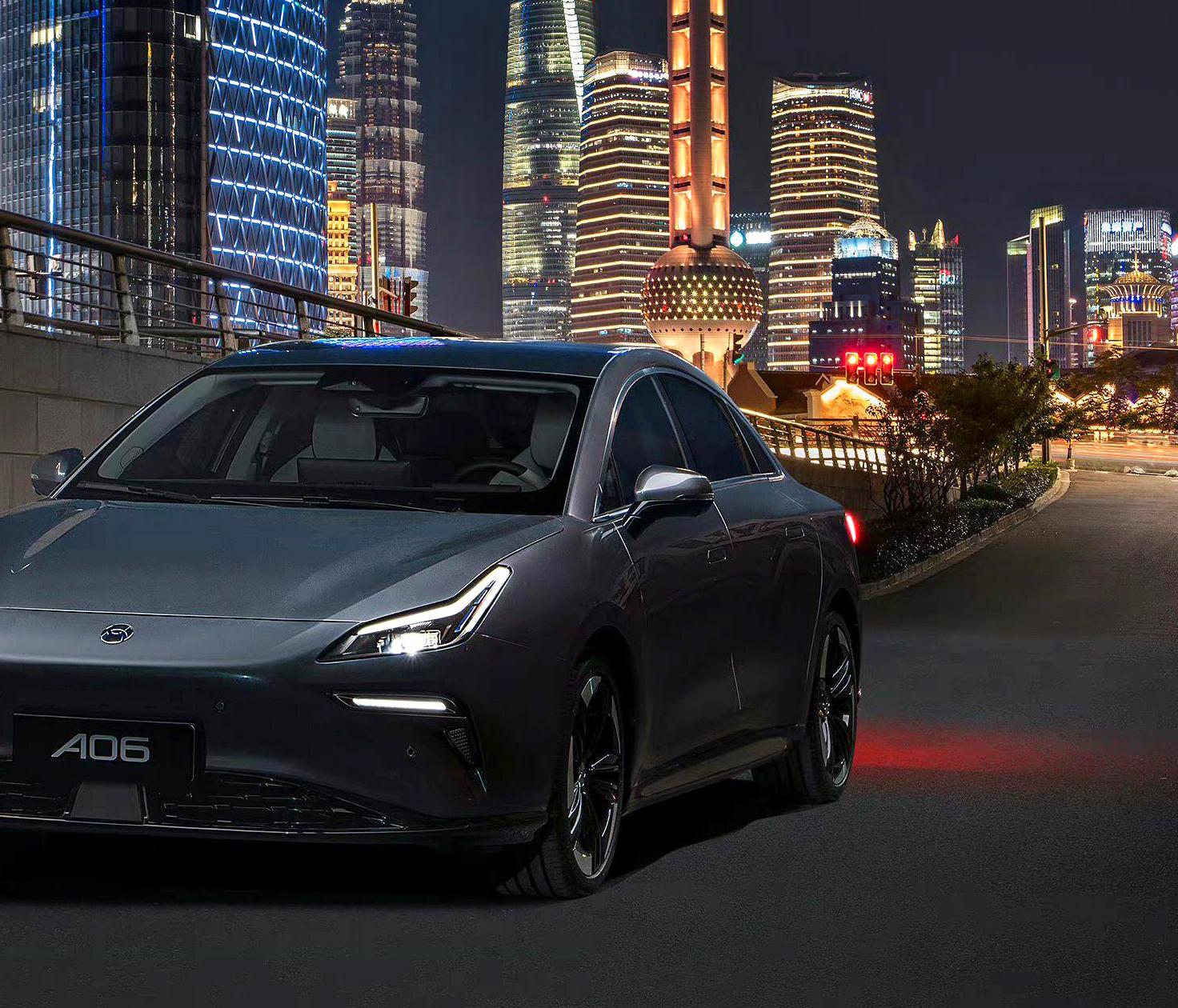
They were followed by BYD’s Song Pro/Plus PHEV and Qin Plus PHEV. These five models also share the top five places in first quarter sales. Although the Tesla Model 3 is only in fifth place, the Tesla Plugin EV had a market share of 9.6 per cent. No other foreign brand made it into the top ten.
Forras_hycan.com.cn
Sustainable technologies should replace today's unsustainable technologies. A new transport and vehicle industry needs to be built, especially for the revolution of electric and self-driving cars. The environmental industry of the green transition replaces today's unsustainable technologies with sustainable ones.
Source: BC4LS Global Debates - 95 theses for long-term sustainability
 By Alexandra Zoltai
By Alexandra Zoltai
On 22 January 2023, the Year of the Rabbit will begin. The shift in energy will be significant as we exit 2022, the energetic Year of the Tiger, and move into the more patient and gentle Year of the Rabbit in 2023. The Chinese zodiac, like the Western zodiac, is made up of twelve signs, each represented by an animal or magical being. In Western astrology the signs pass through the twelve months each year, but in Chinese astrology each sign is given a full year to itself, and a cycle lasts twelve years. Chinese astrology also includes five elements: water, metal, wood, earth and fire; so the zodiac moves through a different element each year. The Year of the Water Rabbit promises a period of rest and reflection after the dynamic Year of the Tiger.
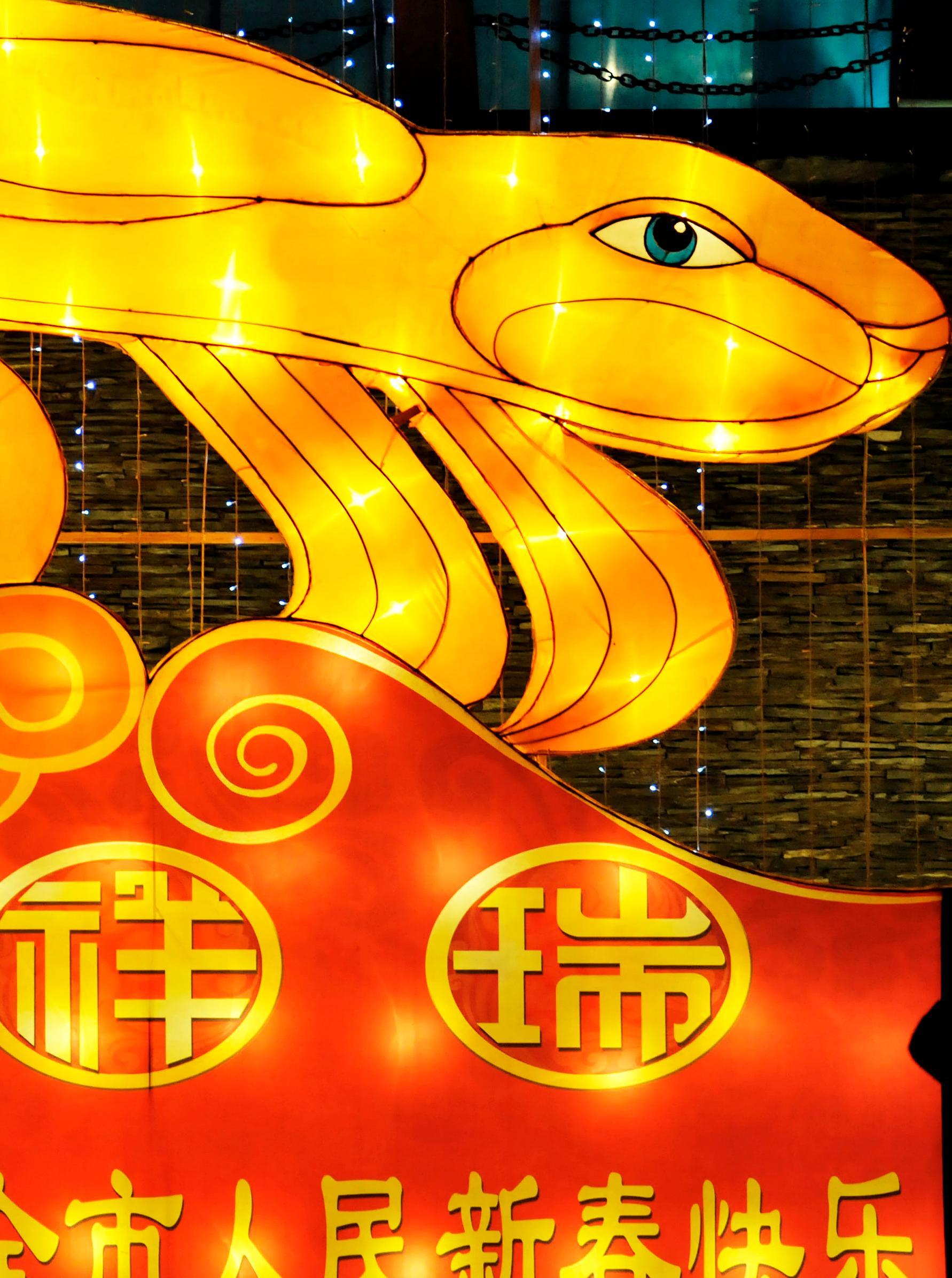
The Chinese New Year or Lunar New Year and Spring Festival (Chun Jie/春节) is the biggest and longest holiday in China, dating back thousands of years. It is a time when life stops for days on end across China. The Spring Festival falls between 21 January and 21 February each year.
The last day of the year, the eve of the New Year, falls on 21 January 2023, when families stay up late after dinner to wait for midnight, the start of the New Year. Families come together to celebrate the end of the New Year, play traditional games, chat and watch the Lunar New Year gala. The celebration also includes a firecracker-throwing ceremony to scare away evil spirits. At midnight, all the doors and windows of the house are opened to let the departing year go.
• Avoiding words with negative connotations.
• No cleaning or sweeping: the day before Spring Festival is a day for cleaning, when bad luck should be swept away, but on New Year's Day this becomes taboo, as good luck can be swept away.
• Avoiding fighting and crying.
• Avoiding taking medicine, lest illness be present all year round.
• The spring roll, because it looks like a golden rod, symbolises prosperity and wealth;
• Long noodles, also called long-life noodles (chang shou mian/长寿面 ). According to tradition, the longer the noodle, the longer one's life will be, so the noodle should not be cut or torn;
• Fish is also a compulsory part of Chinese New Year, as fish symbolises abundance and wealth. In the Chinese language, fish (yu/鱼) is pronounced the same as surplus, abundance, or wealth; peanut: symbolises health and long life; mandarin: symbol of good luck.
The Spring Festival marks the beginning of spring and the new year, and is an occasion for extended families to gather, give gifts and shower each other with good wishes. On the other hand, it is a time to bid farewell to the old year, to rid themselves of its ills and to try to ensure good luck for the new year.
The Lunar New Year starts on 22 January and ends on 5 February with the Lantern Festival. Spring Festival is a time of celebration for attracting and keeping good luck and good fortune, which involves serious traditions and taboos.
 Photo: AFP/Peter Parks
Photo: AFP/Peter Parks


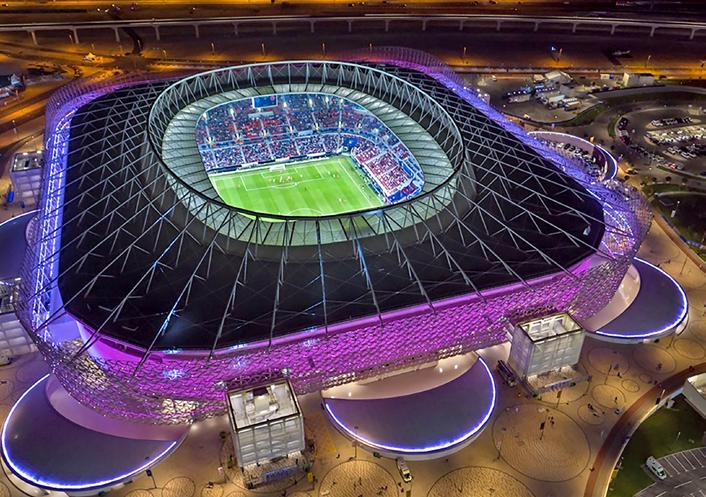


Lionel Messi was presented with a bisht –a traditional Arab cloak – before lifting the World Cup trophy after his country Argentina scored a victory over France in the final on 18 December 2022. A bisht is usually worn for prestige on special occasions such as weddings, or festivals.

Argentinian fans outside the Lusail Stadium, the biggest stadium in Qatar and one of eight stadiums built for the World Cup. It hosted the final game between Argentina and France
 Photo: AFP/Jose Breton
Photo: AFP/Juan Mabromata
Photo: AFP/Jose Breton
Photo: AFP/Juan Mabromata
 By Attila Grandpierre
By Attila Grandpierre
We are living in a special age, and we are facing an almost unimaginably profound change of eras. The one-sided material development of the modern world has proven unsustainable. Just as five hundred years ago the Renaissance led to renewal through the rebirth of ancient knowledge, this is again the way to a solution. The difference is that now we have to turn to even deeper layers of the past, and to even more significant cultures of ancient civilisation, namely Eurasian prehistoric ancient knowledge.
What knowledge do we need today? First and foremost, knowledge to provide substantiation for our decisions. To understand life and the world, to establish a system of choices serving the elevation of peoples and our homeland and our natural environment, at the individual, communal and cosmic levels of our lives.
Human knowledge is communal in nature and comes from tradition. Through the ages, tradition was the compass for our decisions. Modernity, however, has brought individualism to the fore and pushed tradition into the background. Modern man has been left without a natural compass and has come under the influence of the forces that control society. Time has derailed, history has drifted into the service of power. The forces underlying order in nature are still at work today, in universal human nature as well as in our natural environment, just waiting for us to use them to live a fuller life. Today, the time is ripe to regain the compass within the nature of life, understand the nature of life, the nat-
The ancient worldview of mankind, in today's terms the unified system of ancient natural science, natural philosophy and natural religion, was best preserved in Eurasia (indicated by red color). The image shows conditions around 600 AD. Before this period the region of preserved ancient worldview had been larger. Natural religion is a life-centred, community-centred and nature-centred system of science and philosophy, and in this respect Confucianism, Taoism and Shintoism can be included.
ural law directed towards the elevation of life, which is the inexhaustible source of life energy, which provides a backbone, a real natural force for the overall upliftment of our life. Today, the time has come to understand the communal nature of life, the seven fundamental levels of organisation of cosmic life, and the essence of the overall quality of life. Today, the time has come to base our decision-making system on a reality that encompasses not only

The world's most fertile soils, capable of supporting the largest population, form the largest single landscape in the area from the Carpathian Basin to the Pacific Ocean, the Ancient Silk Road region. The same area is the largest in the world best suited for cultural preservation and exchange, the Eurasian plain system.
the material world but also the world of life and reason, and besides invidual life, also communal and cosmic life.
Thousands of years ago and even longer ago, in the vast era of ancient history, the Ancient Silk Road region, from the Carpathian Basin to the Pacific Ocean, was dominated by an ancient, natural, life and community-centred world-view, natural science, natural philosophy and natural religion, where the greatest value was universal life, the all-pervading life of nature. Behind the nature religion lies the notion of a living universe, a mandating and omnipresent cosmic life.
The Ancient Silk Road is the region where the natural geographic conditions are most favourable for the preservation and transmission of ancient cultures and the linking of major civilisations. This is the area where the science of cooperating with nature and ancient knowledge — the unified knowledge system of natural philosophy, natural science, and natural religion — is most strongly rooted. The contemporary name of the life-centred ancient system of knowledge had been wisdom. While knowledge in modernity is value-neutral, wisdom is a system of decisions for the benefit of life. Decision-making for the benefit of life requires a clarification of the orientation inherent in life. Clarifying the directionality of the law of life allows us to


get closer to understanding the driving forces of ancient history. According to nature religion, the organisation of society in ancient Eurasia was directed towards the benefit of life and cooperation with nature, towards the creation of the most favourable conditions not only for the natural environment but also for universal human nature, towards the fulfilment of man's best capabilities.
We have much to learn from ancient Eurasia. Eurasia is the largest and most populous continent, with the most ancient culture. Eurasia is the region where nature religion, nature philosophy, civilisation in cooperation with nature, natural geography and favourable living conditions are most closely linked. Eurasia has the deepest historical roots of sustainability. In our series, we open the door to
Areas of the strongest traces of ancient Eurasian religion at the end of the 20th century. The traditions that have been preserved in North and East Asia, South-East Asia and the Carpathian Basin are versions of a much more comprehensive and profound organic worldview than the shamanism or animism we know today. All three maps are taken from the book “The Ancient History of the Silk Road – the Role of Hungarians in Eurasia”.
the spiritual life of ancient Eurasia, with the aim of ensuring that our decision-making system becomes more complete and informed, and allowing us to contribute to the fulfilment of the New Renaissance.
The author is Research President at the Budapest Centre for Long-Term Sustainability

Published by Neumann Lapkiadó
és Kommunikációs Kft.
Publisher's Headquarters: 1117 Budapest, Hungary, Infopark sétány 1.
Responsible Publisher:
Levente Horváth, Ph.D., Managing Director
Editor-in-Chief: Levente Horváth, Ph.D.
Managing Editor: Mariann Őry, Péter Petán
Text Editor: Erika Koskocki
Editors: Loretta Tóth, Gabriella Viland
Photo Editor: Róbert Hegedüs
Graphic Design and Layout: Alexandra Érsek-Csanádi, Anita Kónya
Eurasia Magazine Online Editorial Board
Members:
Ágnes Bernek, Ph.D., László Csicsmann, Ph.D., Norbert Csizmadia, Ph.D., Mózes Csoma, Ph.D., Prof. Zoltán Dövényi, Ph.D., Béla Háda, Ph.D., Prof. Imre Hamar, Ph.D., Eric Hendriks Ph.D., Prof. Judit Hidasi, Ph.D., Dr. Máté Ittzés, Ph.D., Péter Klemensits, Ph.D., Kristóf Lehmann, Ph.D., Csaba Moldicz, Ph.D., Prof. Erzsébet N. Rózsa, Ph.D., Borbála Obrusánszky, Ph.D., Prof. József Popp, Ph.D., Sándor P. Szabó, Ph.D., Prof. Zsolt Rostoványi, Ph.D., Gergely Salát, Ph.D., Péter Szatmári, Ph.D., István Szerdahelyi, Ph.D., Prof. István Szilágyi, Ph.D., Prof. István Tarrósy, Ph.D., Prof. István Tózsa Ph.D., Prof. László Vasa Ph.D., Zoltán Wilhelm, Ph.D., Alexandra Zoltai
Copyright :
All rights of use of the databases of Eurasia Magazine Online are granted to the Neumann Lapkiadó és Kommunikációs Kft. The written material and photographs used on this website are protected by copyright. They may not be published, broadcast or transmitted in any form or by any means, or stored in whole or in part on a computer, whether in their original or transcribed form.
John von Neumann was born in Budapest on 28 December 1903. He was a athematician and mathematical physicist, who made significant contributions to game theory, set theory, quantum mechanics, nuclear physics, and laid the foundations for the operation of the modern computer. The Financial Times named him Man of the Century in the 20th century. The 120th anniversary of the birth of John von Neumann will be celebrated in 2023 with a major commemorative year. The university that bears the mathematician's name will join in the celebrations with a series of events.
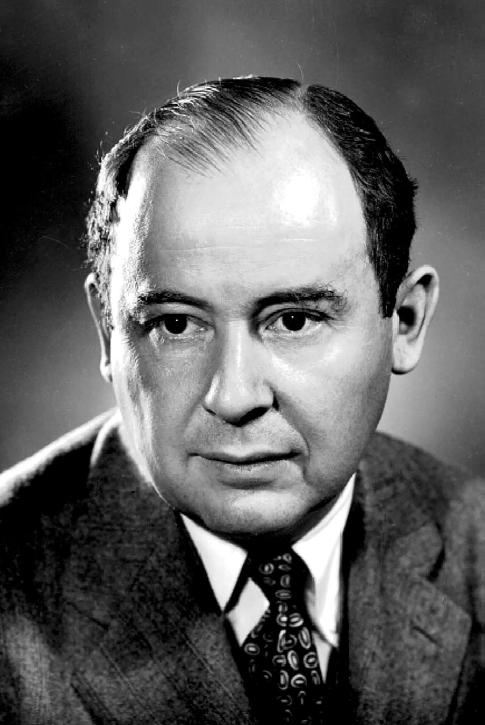
"Eurasia is the world's axial supercontinent."
Zbigniew Brzezinski

